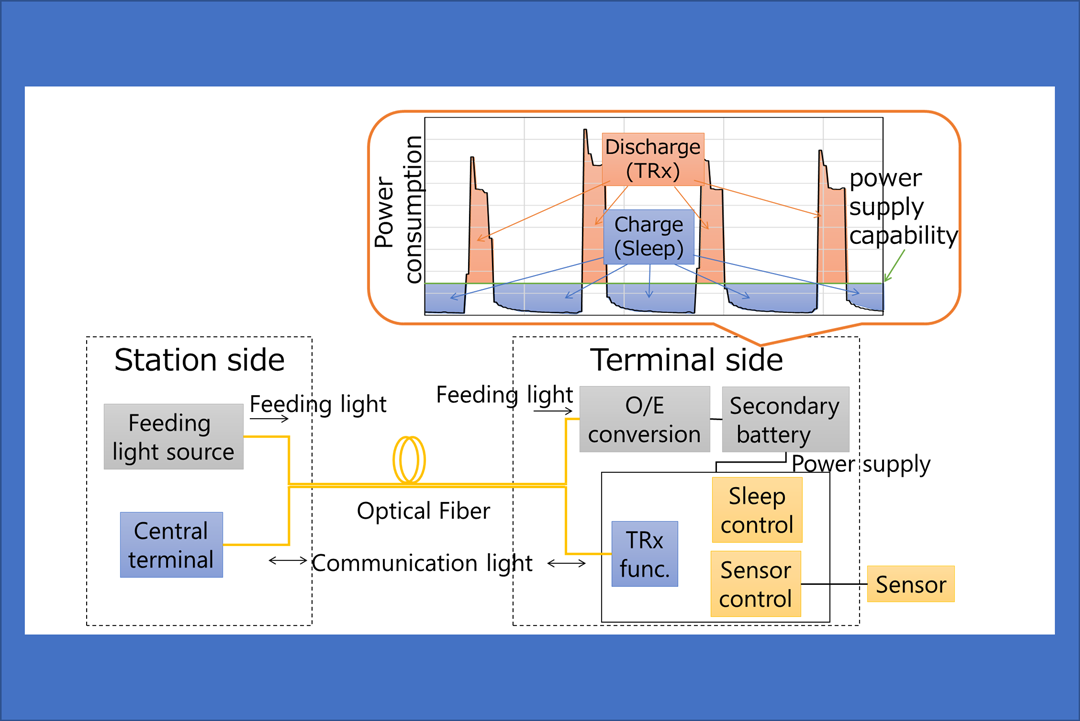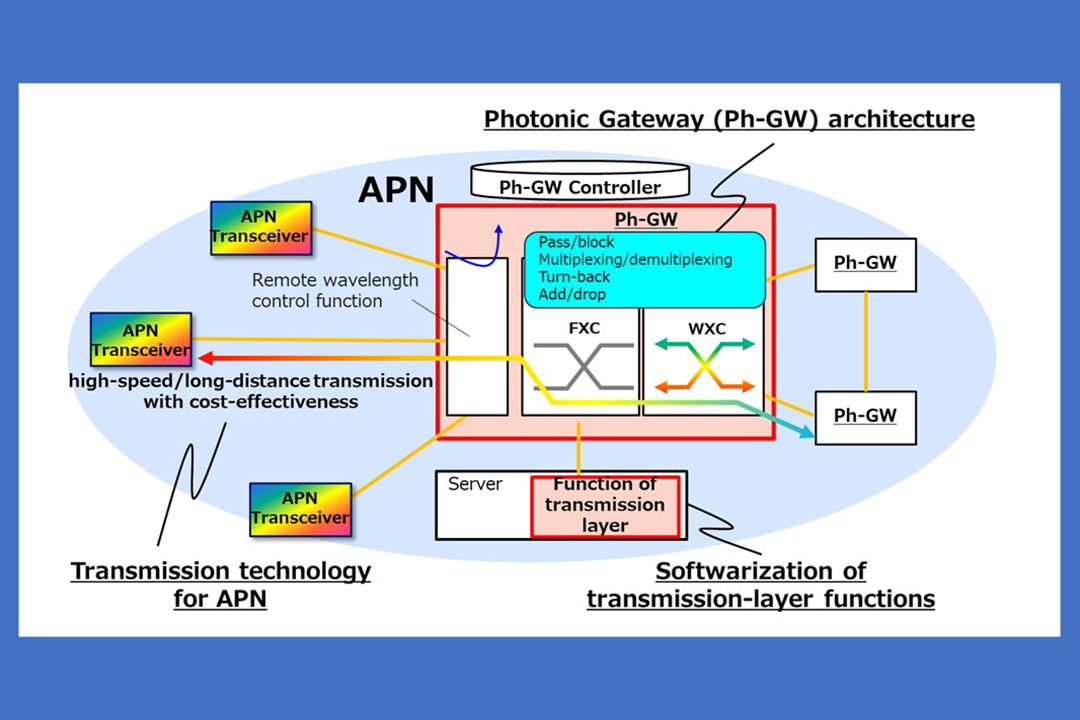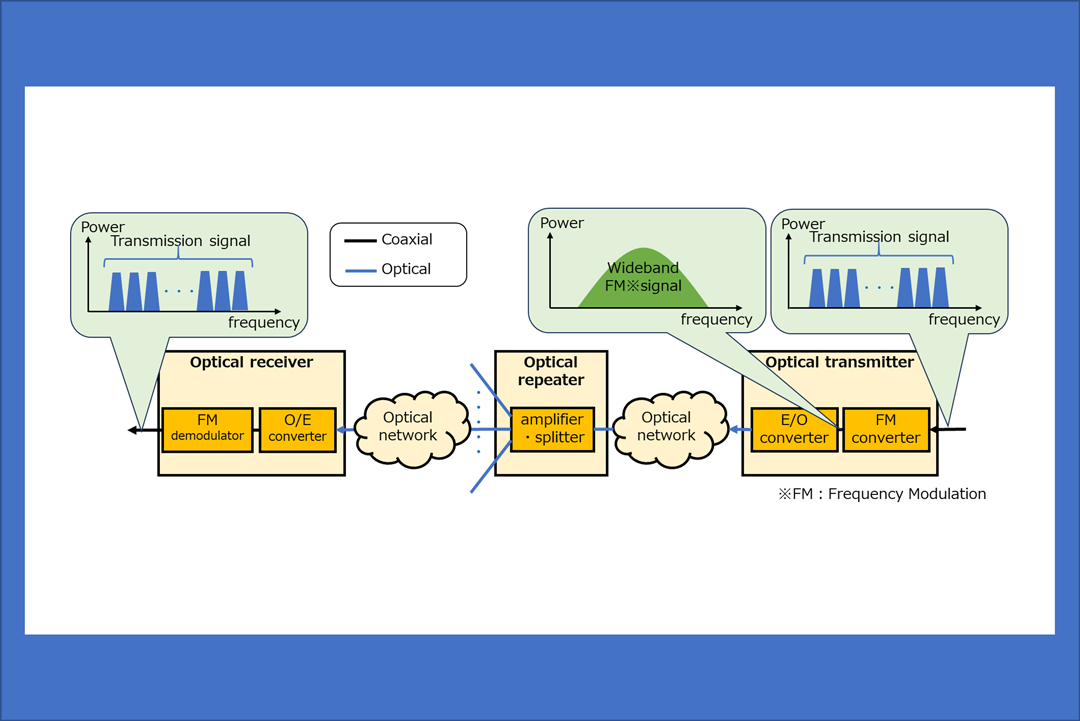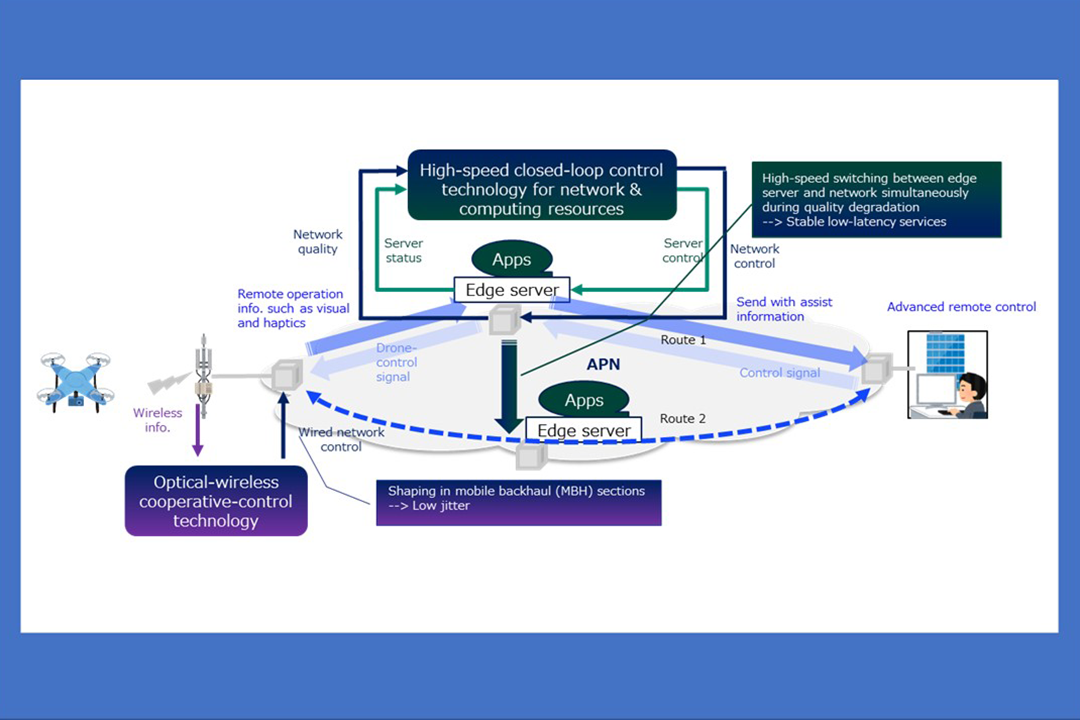Access system technologies
A network that can promptly provide a wide variety of services by flexibly utilizing wavelengths
Very high speed optical fiber communication services at lower cost.
Action
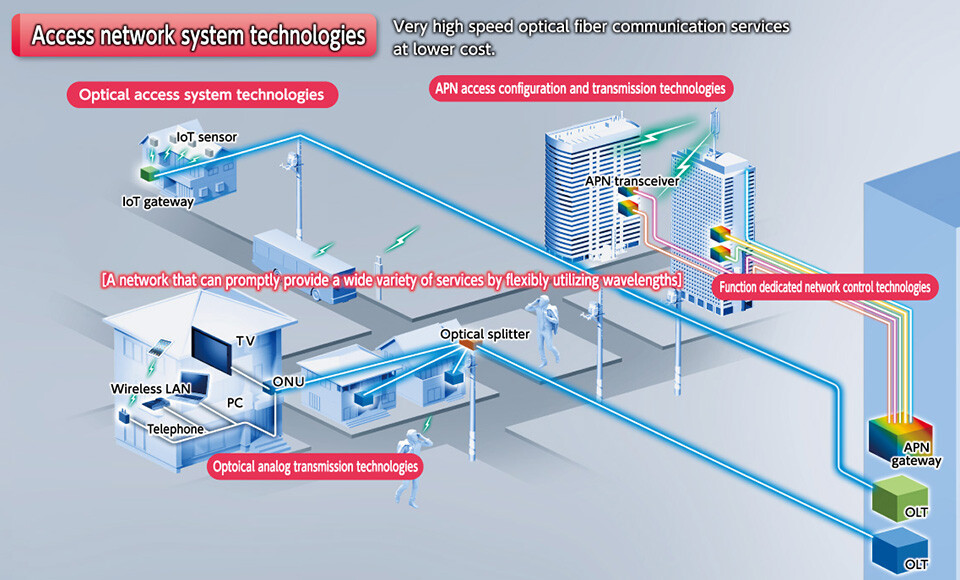
Optical access system technologies
We are engaged in research and development that aims to provide communication environments for non-electrified areas (remote places, underground, etc.), where conventional optical access services have been difficult to provide. In this study, we aim to expand the area of communication services for IoT sensors and other devices by supplying power via power over fiber to terminals installed in non-electric areas, reducing average power consumption through operating the terminals only for the minimally required time, and improving environmental resistance.
APN access architecture and transmission technologies
We are engaged in the research and development of a Photonic Gateway having a remote wavelength control function, pass/block function, multiplexing/demultiplexing function, turn-back function, and add/drop function as an access node that can accommodate various types of user equipment toward the realization of an All-Photonics Network (APN). We are also trying to create access-area optical transmission technologies that can achieve high-speed/long-distance transmission in a cost-effective manner so that the technologies can be applied to the APN. Furthermore, we are researching softwarization of diverse transmission-layer functions on general-purpose hardware for drastically improving flexibility through replacement and optimization of transmission functions.
Optical analog transmission technologies
We are engaged in R&D on optical analog transmission technology centered on the "FM conversion system" to transmit various signals including multichannel video signals to customers' homes via optical networks. In this system, various signals are converted into a wideband FM (frequency modulation) signal and then into an optical signal for transmission. The optical signal is amplified and splitted repeatedly by the optical repeater, then received by the optical receiver and demodulated to the original signal. Compared to the intensity modulation system, which directly modulates video signals to optical signal power, this system is resistant to noise in the transmission fiber and can transmit high-quality video signals over long distances.
Low-latency FDN Technology
Low-latency function-dedicated network (FDN) monitors the total transmission time of the network and processing time of edge computing, always maintains low latency and low jitter according to service-performance requirements, and provides continuous and stable communication services. It collects network information and computing-resource information, analyzes quality in real-time, and controls network and servers in the event of quality degradation by having the network controller and computing-resource controller cooperate. This technology also provides low-latency and stable network along wireless and wired sections through optical-wireless cooperative-control technology that takes into account wireless environment having large fluctuations in latency, etc.
